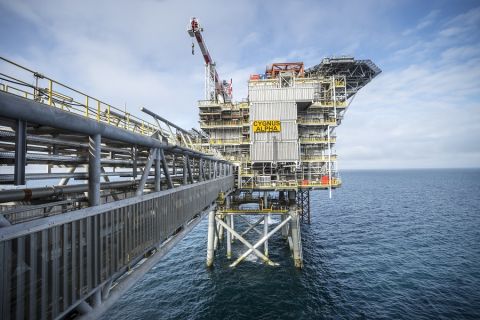Drilling will never be a one-size-fits-all operation. Every well presents a unique set of conditions that vary during construction. For years the industry has been applying discrete drilling technologies and relying on incremental enhancements to improve drilling efficiency. While this has produced noteworthy results, performance is still plagued by inefficiencies due to the interfaces between multiple technology and service providers.
By adopting a holistic, consistent and collaborative approach to managing the entire drilling system, the industry can achieve fundamental improvements and new levels of drilling performance. This requires industry participants to completely rethink the way we operate. We need to redesign and digitally enable workflows to drive integrated technology and service delivery platforms built on cloud-based single data sources. That is the way to empower the industry to rise above the present-day barriers of data and domain silos and disconnected drilling services. Such a radical level of change requires a new mindset for both operators and service companies.
Imagine a digital well construction platform, one that ensures optimal performance of the complete drilling system from planning to implementation. This platform drives the execution of digital well plans on a rig to enhance people productivity, assure equipment reliability, optimize drilling workflows and reinforce compliance and safety procedures. Roles and responsibilities are redefined through redesigned workflows and embedded standard work instructions, thereby changing the work itself. The platform also would include a robust enterprise security framework that ensures the protection of data at all times.
The combination of data-driven technologies supported by domain knowledge will facilitate automation during planning and operations, leading to increased efficiency and consistency while also minimizing risk while overcoming complex drilling challenges. The industry will achieve new levels of drilling performance when it fully integrates people, processes and technologies from operators and service companies via digitally enabled workflows during the well construction cycle.
Schlumberger is developing a domain-driven drilling software solution that provides all of these features and functionalities in a user-centric environment. Such an environment will enable a high level of collaboration during the planning phase so that multiple domain experts can work from a single model. This also will facilitate automated well design with immediate validation of changes, identify risks and uncertainties and provide traceability for design modifications. The result of the planning process is a digital well plan that is delivered to drilling operations.
During the drilling process large volumes of data are collected from multiple sources, including sensors and control units on the rig, downhole technologies, surface instrumentation and the enterprise resource planning systems that drive logistics and planning-related information. Gathering all of the data into a single environment fully enables collaborative domain workflows that are then executed in accordance with the digital well plan. An exception management process provides risk management when there are deviations from the plan. As more wells are drilled, intelligent automation, machine learning and data analytics are integrated into these workflows to ensure continuous improvement, leading to sustainably lower development costs.
The Schlumberger cognitive drilling rig, our “rig of the future,” will incorporate this new software platform with newly designed, digitally enabled hardware that connects to an integrated control system. Beyond the software platform, the Schlumberger rig of the future combines advanced mechanization with drilling automation applications. As a complete system, this will deliver disruptive drilling performance.
Today the industry needs to do something it has never done before to achieve a genuine step change in performance. This requires rising above attempts to make incremental improvements in existing discrete workflows and technologies and instead completely redesigning the workflows and redefining the work itself with a clear focus on efficiency and consistency.
The technology is out there to do this. It now comes down to what we make of it together.
Recommended Reading
Permian Resources Continues Buying Spree in New Mexico
2024-01-30 - Permian Resources acquired two properties in New Mexico for approximately $175 million.
Eni, Vår Energi Wrap Up Acquisition of Neptune Energy Assets
2024-01-31 - Neptune retains its German operations, Vår takes over the Norwegian portfolio and Eni scoops up the rest of the assets under the $4.9 billion deal.
NOG Closes Utica Shale, Delaware Basin Acquisitions
2024-02-05 - Northern Oil and Gas’ Utica deal marks the entry of the non-op E&P in the shale play while it’s Delaware Basin acquisition extends its footprint in the Permian.
Vital Energy Again Ups Interest in Acquired Permian Assets
2024-02-06 - Vital Energy added even more working interests in Permian Basin assets acquired from Henry Energy LP last year at a purchase price discounted versus recent deals, an analyst said.
California Resources Corp., Aera Energy to Combine in $2.1B Merger
2024-02-07 - The announced combination between California Resources and Aera Energy comes one year after Exxon and Shell closed the sale of Aera to a German asset manager for $4 billion.





